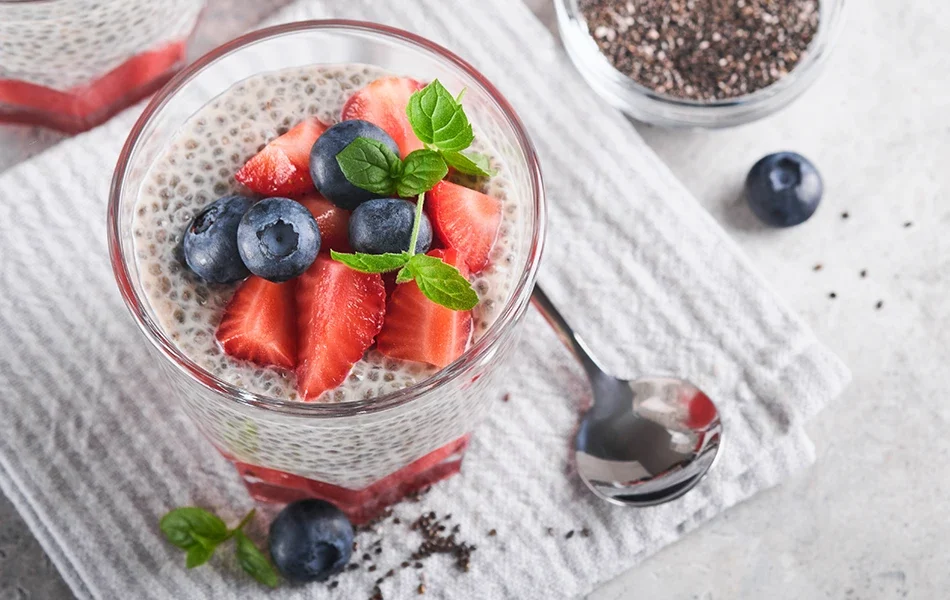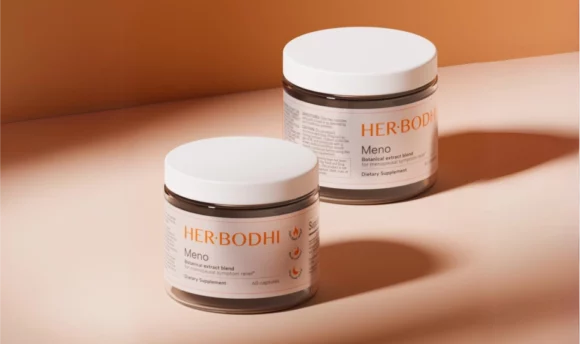How to Get More Fiber? Unlock the Fiber-Fueled Secret
Discover 12 handy hacks to increase your fiber intake and improve your health from the inside out.

As an essential nutrient, fiber not only relieves digestive discomfort but also regulates your blood sugar levels, which keeps hunger and cravings at bay. Failing to consume enough of this carbohydrate can increase your risk of developing a whole host of chronic diseases, from obesity to diabetes.
So, if you’re struggling to go to the toilet, have low energy levels, or find yourself feeling unsatisfied after your usual meals and snacks, it may be a sign that you’re not getting enough fiber into your daily diet. Luckily, there are a few small swaps you can make to change this.
We’ll explain what these swaps are, their benefits, and exactly how to integrate them into your everyday routine.
How to Get More Fiber? Discover the Fiber-licious Hacks
Dietary fiber is an essential nutrient for keeping your digestive system running smoothly and maintaining good heart health. However, many people struggle to meet their daily fiber goals. If you’re wondering how much fiber this is, recommendations vary based on age and gender:
- Men under 50 – 31 to 34 grams
- Women under 50 – 25 to 28 grams
- Men over 50 – 28 grams
- Women over 50 – 22 grams
- Children (ages 1 to 18) – 14 to 31 grams
Failing to achieve these goals can leave you feeling constipated, may elevate your blood pressure, and can increase your risk of heart disease in the future. However, if you are struggling, there are plenty of things that you can do to avoid these situations and keep your fiber intake high.
Here are 12 simple gut health hacks that make incorporating fiber into your everyday routine much easier:
#1 Start your day with whole grains
Whereas refined grains have their fiber-filled bran removed, whole grains go through minimal processing, and their bran is left intact. This means that the fiber they provide absorbs more slowly into your body, helping maintain stable blood sugar levels and prevent energy crashes throughout the day.
You’ll also stay fuller for longer, meaning you’re less likely to reach for those mid-morning sugary snacks to keep you going until lunch. We’d recommend replacing sugary cereals with whole-grain breakfast foods like oatmeal. Include an extra boost of fiber by topping your bowl with berries, and add a drizzle of honey for some natural sweetness.
#2 Eat vegetables with every meal
If you’re looking for an easy way to keep your appetite satisfied, try to eat some form of vegetable with breakfast, lunch, and dinner.
Not only are vegetables high in fiber, but they also contain a range of essential vitamins and minerals that may protect you against many chronic conditions, from cardiovascular disease to stroke. Non-starchy vegetables like broccoli, cabbage, mushrooms, and onions are particularly great as they’re also low in calories, which is ideal for those hoping to maintain a healthy weight.
To increase your vegetable intake and prevent yourself from overeating in general, try to make them the first thing you eat on your plate. One study found that people who were served a salad 20 minutes before a meal ate 23% more vegetables than those who got a salad with the meal itself.
#3 Sprinkle seeds on your meals
Seeds make a great addition to any meal as they’re high in healthy fats, protein, and fiber, which protect your heart health. In fact, research shows that eating as little as 3–4 handfuls of seeds or nuts per week can lower your risk of coronary heart disease by 20%.
The best thing about this handy hack is that you won’t need to make any drastic changes to your diet to consume your daily fiber dose – simply sprinkle some on or stir in some flax, chia, or pumpkin seeds to your favorite meals, including:
- Stir fries
- Baked goods
- Salads
- Smoothies
- Chicken or fish coating
- Yogurt
- Chia pudding
#4 Make berries your snack
Swap sugary candy bars and salty chips for berries if you need a fiber boost throughout the day. Berries contain soluble fiber, which helps your food move slowly through the digestive tract to keep you full throughout the day.
They’re just as good eaten fresh or frozen and are not only a great snack but can also be paired with yogurt, cereal, or even salads for an extra burst of sweetness.
At 8 grams per cup, choose raspberries or blackberries for a significant fiber increase. Strawberries and blueberries are also great selections, with 3 and 4 grams of fiber per cup, respectively.
#5 Opt for whole fruits
Drinking pre-packaged juices and smoothies is a convenient way of getting plenty of micronutrients into your diet, especially if you’re on the go or have a busy schedule. However, manufacturers tend to remove fiber from the fruits that go into these drinks, leaving only sugary carbohydrates behind.
Although you can still enjoy juices in moderation and meet your daily nutrient goals, the best way of getting more fiber and less sugar is by eating whole fruits. Along with berries, some other high-fiber fruits include bananas, pears, kiwis, and apples.
#6 Include legumes in your meals
Lentils, beans, and dried peas belong to a food group known as legumes. These are all high in protein and deliver a variety of other important nutrients, including fiber.
Legumes are also a source of prebiotics, which act as food for the good probiotic bacteria within the body. This helps keep your gut microbiome happy and healthy, so you’re less likely to experience bloating or constipation.
As well as keeping you satisfied and full after eating, including legumes in your meals instead of meat a few times per week has been linked with a lower risk of diseases such as type 2 diabetes. For instance, try substituting beef or pork mince for lentils in a spaghetti bolognese.
You could also add lentils to your favorite salad, make bean burritos, or eat carrot sticks with bean dips like hummus.
#7 Blend green smoothies
Green smoothies typically contain leafy green vegetables like kale and spinach, along with cucumber, apples, and any other fruits or vegetables of your choice. They provide important vitamins and minerals, yet are low-calorie and packed full of fiber, making them ideal as part of a healthy weight loss diet.
You should also include some healthy fats in your smoothie, such as avocado, nut butters, chia seeds, or flax seeds. These ingredients can contribute to a healthy heart by lowering your blood pressure and preventing cardiovascular disease.
However, try to avoid pre-packaged green smoothies, as they are often loaded with added sugars, flavors, and preservatives that decrease the nutritional value of the drink.
#8 Keep fiber-rich snacks on hand
When it comes to snacking, you’re likely to reach for whatever is most convenient if you’re super hungry. So, whether you’re at home, work, or need something quick after the gym, try to make sure that your snack choices consist of high-fiber, healthy foods.
Replace sugary cereal bars with energy balls, candy bars with popcorn if you’ve got a sweet tooth, and keep small portions of nuts on hand to tide you over until dinner time. Try switching potato chips for crispy kale chips or crunchy chickpeas.
#9 Try a fiber supplement
Generally, the best way of getting your daily dose of vitamins, minerals, and fiber is through food. However, with 95% of people in the US failing to get enough fiber into their diets, sometimes you may need to turn to supplements to reach your goals.
Look out for ingredients like psyllium husk. Psyllium husk is a natural dietary fiber that supports good digestive health by forming a gel in your stomach. This promotes regular bowel movements, preventing diarrhea and constipation while also lowering blood sugar levels and reducing appetite.
If you do try a fiber supplement, try to introduce this gradually into your routine, as it may initially cause bloating and stomach cramps as your body adjusts to the influx of fiber. You should also consult your doctor first, particularly if you are pregnant, breastfeeding, or on any other medications.
#10 Air-pop popcorns
You may be surprised to hear that one of your favorite movie snacks is high in fiber and ideal as a healthy, on-the-go snack. Popcorn is a whole-grain corn kernel variety that contains around 4 grams of fiber per every 3 cups.
It’s also extremely versatile, as you can make it into a sweet or salty snack depending on your mood. You could also try adding cinnamon or cayenne pepper to give your popcorn a kick, but steer clear of buying it ready-popped from the grocery store.
These varieties tend to be loaded with added sugar, which can increase your risk of high blood pressure, diabetes, fatty liver disease, and obesity.
#11 Use high-fiber flours for baking
An easy high-fiber swap you can make while baking is to use fiber-filled flour rather than white flour. You can add it to homemade breads and muffins along with pumpkin, sunflower, or chia seeds for an extra fiber boost.
One option is whole-wheat pastry flour, which has 5 times more fiber compared to regular flour. Some other options include:
- Coconut flour – 33 grams of fiber per 100 grams
- Soy flour – 24 grams grams of fiber
- Buckwheat flour – 10 grams of fiber
- Chickpea flour – 10 grams of fiber
#12 Always read the labels
Rather than relying on pre-packaged foods, we’d always recommend making your own meals from whole plant foods if you’re hoping to increase your fiber intake. However, there will be times when you’re out and about, and time or location restrictions mean you might need to quickly grab something on the go.
Surprisingly, there are a number of convenience foods that are naturally high in fiber or have functional fibers like polydextrose or inulin added to them. This includes soups, some low-sugar cereals, granola bars, and yogurt, many of which are good sources of fiber as they contain more than 2.5 grams per serving.
Before making your choice, however, always read the product’s nutrition label first, as this can help you decide straight away whether the item is suitable for your high-fiber diet. You’ll also be able to see the number of calories, along with how much sugar the food contains.
A Word From Our MD


Eating a high-fiber diet is important for improving your gut health, regulating blood sugar levels, and keeping your hunger in check. All of this is essential for keeping your cardiovascular and digestive systems healthy.
Getting more fiber in your diet can be as simple as including more fruits and vegetables and eating more whole grains. However, if you are struggling, you may want to try using a fiber supplement, which can be particularly useful for those with irritable bowel syndrome (IBS).
Adjusting to a higher fiber intake can take some time and may lead to a temporary increase in bloating, gas, and stomach cramps while your body processes it. To reduce these effects, try gradually adding more fiber-rich foods to your diet.
You should also be sure to drink plenty of water every day, as this can encourage fiber to pass through your digestive system more easily.
FAQs
Some high-fiber foods include, but aren’t limited to, berries, apples, broccoli, avocados, beans, brown rice, whole grains, popcorn, and oatmeal.
As recommended fiber intake varies based on age and gender, 25 grams should be the minimum goal you’re aiming for unless you’re a woman over 50 or a child under 18. Try to include fruits or vegetables with every meal, and swap refined grains for whole grains like brown rice, whole-wheat flour, and oatmeal. Keep high-fiber snacks on hand for when you get hungry.
Three of the best types of food to increase your dietary fiber intake include legumes like lentils and beans, fruits such as berries, and nuts or seeds, including chia, flax, pumpkin, and sunflower seeds.
Conclusion
While changing your diet may seem initially daunting, you don’t need to make any drastic changes – with our 12 simple tips, you can easily increase your fiber intake to boost your gut and heart health for good.
Eat more fruits and veggies with your meals, swap refined grains for whole grains like brown rice and legumes, and carry high-fiber snacks like popcorn wherever you go. Fiber supplements are an easy way of increasing your intake, but always check with your doctor before adding them to your routine.

















































 Select your language:
Select your language: 








